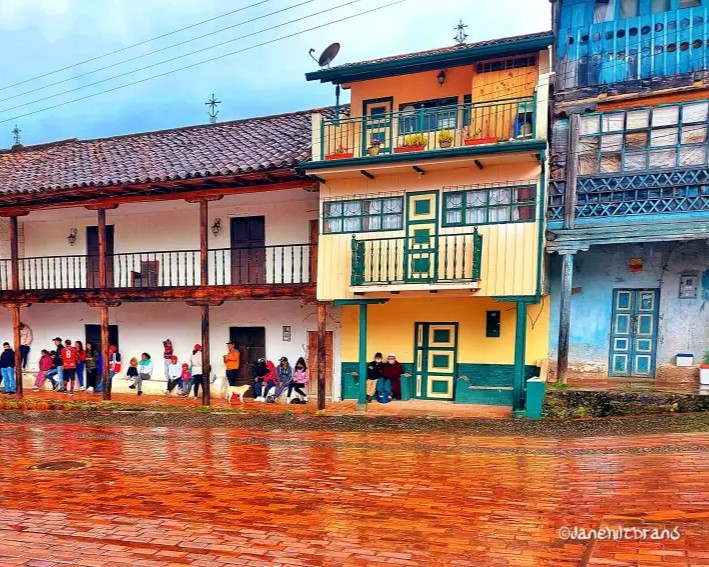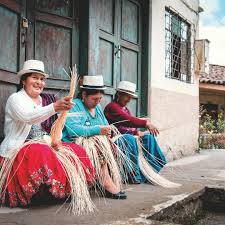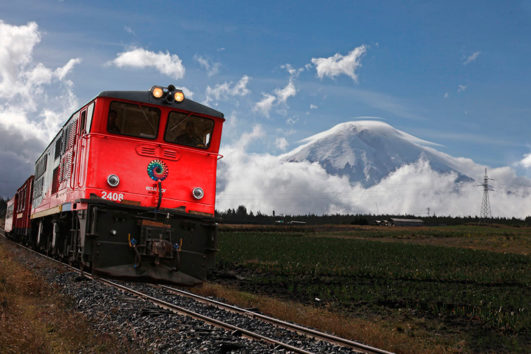Imagine stepping into a world where time seems to have stood still, where the vibrant colors of adobe homes and the serene landscapes of the Andean highlands greet you. Welcome to Quingeo, Ecuador, a hidden gem nestled just southeast of Cuenca. This quaint village, with its rich cultural heritage and picturesque scenery, offers a unique escape from the hustle and bustle of modern life.
Quingeo is not just another destination; it’s a journey into the heart of Ecuadorian tradition and natural beauty. As you wander through its charming streets, you’ll encounter centuries-old architecture that tells stories of a bygone era. The village’s adobe houses, adorned with intricate designs, reflect the skilled craftsmanship of its inhabitants. These homes, built using traditional methods, stand as a testament to the enduring legacy of the region’s indigenous communities.
But Quingeo is more than just a visual delight. It’s a place where you can truly connect with nature and experience the tranquility of rural life. The surrounding landscapes, with their rolling hills and lush greenery, provide the perfect backdrop for outdoor activities. Whether you’re hiking through the Andean trails or simply enjoying a peaceful afternoon by the river, Quingeo offers a serene retreat for every traveler.
At Hotel Boutique Mansión Alcázar, we invite you to explore this enchanting village and immerse yourself in its timeless charm. Our meticulously curated guides and tours ensure that you don’t miss any of the hidden treasures that Quingeo has to offer. From historical landmarks to local culinary delights, our comprehensive blog post will take you on an unforgettable journey through this captivating destination.
So, pack your bags and get ready to discover the wonders of Quingeo, Ecuador. Continue reading to uncover the best-kept secrets of this picturesque village and start planning your next adventure with us.
Exploring the History of Quingeo
Quingeo, a picturesque village near Cuenca, Ecuador, is steeped in history that dates back to pre-Columbian times. This quaint village has witnessed significant historical events and cultural influences that have shaped its development over the centuries. Let’s delve into the rich historical tapestry of Quingeo and uncover the stories that have made it a hidden gem in Ecuador.
Quingeo’s history is a fascinating blend of indigenous heritage and colonial influences. The village’s roots can be traced back to the Cañari people, who were the original inhabitants of the region. The Cañari were known for their advanced agricultural practices and intricate social structures. Their legacy is still evident in the terraced fields and ancient ruins that dot the landscape around Quingeo.
Pre-Columbian Era
Before the arrival of the Spanish conquistadors, Quingeo was a thriving settlement of the Cañari civilization. The Cañari people were skilled farmers and engineers, creating sophisticated irrigation systems and terraced fields that allowed them to cultivate the fertile Andean soil. Their spiritual beliefs and practices were deeply connected to the natural environment, with sacred sites and ceremonial centers scattered throughout the region.
One of the most notable remnants of the Cañari era is the archaeological site of Ingapirca, located a short distance from Quingeo. Ingapirca, meaning “Inca wall,” is the largest and best-preserved Inca ruin in Ecuador. Although primarily associated with the Inca Empire, the site was initially a Cañari ceremonial center before being repurposed by the Incas. This blend of Cañari and Inca architecture provides a unique glimpse into the region’s pre-Columbian past.
Colonial Influence
The arrival of the Spanish in the 16th century marked a significant turning point in Quingeo’s history. The Spanish colonization brought about profound changes, including the introduction of Christianity and European architectural styles. The village’s adobe houses, with their whitewashed walls and red-tiled roofs, reflect the fusion of indigenous and colonial influences that characterize Quingeo’s built environment.
During the colonial period, Quingeo became an important agricultural hub, producing crops such as maize, potatoes, and beans. The Spanish also introduced new crops, including wheat and barley, which were cultivated alongside traditional Andean staples. The village’s economy thrived, and its population grew as more settlers moved to the area.
Modern Developments
In the years following Ecuador’s independence from Spain in 1822, Quingeo continued to evolve while retaining its historical charm. The village has managed to preserve its cultural heritage, with many of its traditional adobe houses still standing today. These homes, built using age-old techniques, are a testament to the enduring legacy of Quingeo’s past.
Today, Quingeo is a vibrant community that celebrates its rich history through various cultural events and festivals. Visitors can explore the village’s historical landmarks, such as the Church of San Bartolomé, which dates back to the colonial era. The church, with its stunning architecture and intricate woodwork, is a focal point of Quingeo’s cultural and religious life.
Quingeo’s history is not just a tale of the past; it is a living narrative that continues to shape the village’s identity. As you wander through its charming streets and interact with its warm and welcoming residents, you’ll gain a deeper appreciation for the historical significance of this hidden gem near Cuenca.
Top Attractions in Quingeo
Quingeo, Ecuador, is a treasure trove of attractions that cater to a variety of interests. Whether you’re a nature enthusiast, history buff, or cultural explorer, Quingeo has something to offer. Here are some must-visit spots that you should include in your itinerary.
Natural Wonders
Quingeo is surrounded by stunning natural landscapes that are perfect for outdoor activities whether you travel solo or with family. The rolling hills and lush greenery provide an ideal setting for hiking, bird watching, and photography. One of the most popular natural attractions is the Quingeo River, where visitors can enjoy a peaceful afternoon by the water or take a leisurely stroll along its banks, ideal for couples.
Another natural wonder worth visiting is the Ingapirca Archaeological Site. Although primarily associated with the Inca Empire, this site was initially a Cañari ceremonial center. The blend of Cañari and Inca architecture offers a unique glimpse into the region’s pre-Columbian past.
Historical Sites
Quingeo is rich in history, with several landmarks that tell the story of its past. The Church of San Bartolomé is a must-visit. This colonial-era church is known for its stunning architecture and intricate woodwork. It serves as a focal point for the village’s cultural and religious life.
Another historical site to explore is the Adobe Houses of Quingeo. These traditional homes, built using age-old techniques, are a testament to the village’s enduring legacy. Walking through the streets lined with these charming houses is like stepping back in time.
Cultural Experiences
For those interested in local culture, Quingeo offers several unique experiences. The village hosts various cultural events and festivals throughout the year, celebrating its rich heritage. One such event is the Quingeo Festival, where visitors can enjoy traditional music, dance, and food.
Don’t miss the opportunity to visit local markets, where you can find handmade crafts and traditional Ecuadorian cuisine. The markets are a great place to interact with the friendly locals and learn more about their way of life.
At Hotel Boutique Mansión Alcázar, we provide meticulously curated guides and tours to ensure you don’t miss any of these hidden treasures. From historical landmarks to natural wonders, our comprehensive blog post will take you on an unforgettable journey through Quingeo, Ecuador.
Travel Tips for Visiting Quingeo
Planning a trip to Quingeo, Ecuador? This charming village near Cuenca offers a unique blend of cultural heritage and natural beauty. To ensure you have a smooth and enjoyable visit, here are some practical travel tips, including how to get there, where to stay, and what to pack.
Whether you’re a seasoned traveler or a first-time visitor, these insights will help you make the most of your time in Quingeo.
Getting to Quingeo
Quingeo is located about 50 minutes southeast of Cuenca. The most convenient way to reach Quingeo is by car. You can rent a car in Cuenca or hire a taxi for a more comfortable ride. If you prefer public transportation, local buses run regularly from Cuenca to Quingeo. Make sure to check the bus schedules in advance to plan your trip accordingly.
For those who enjoy a bit of adventure, consider renting a bicycle and cycling to Quingeo. The scenic route offers breathtaking views of the Andean highlands, making the journey as enjoyable as the destination.
Accommodation Options
While Quingeo is a small village, it offers several accommodation options to suit different preferences and budgets. For a more immersive experience, consider staying in one of the local guesthouses or bed and breakfasts. These establishments often provide a more authentic glimpse into the local way of life.
If you prefer more luxurious accommodations, you can stay in Cuenca and take day trips to Quingeo. Hotel Boutique Mansión Alcázar in Cuenca offers a comfortable and elegant stay, with easy access to Quingeo and other nearby attractions.
Packing Essentials
When packing for your trip to Quingeo, consider the local climate and the activities you plan to engage in. Here are some essentials to include:
- Comfortable clothing: Lightweight and breathable fabrics are ideal for daytime, while a light jacket or sweater is recommended for cooler evenings.
- Sturdy footwear: Whether you’re exploring the village streets or hiking in the surrounding hills, comfortable and durable shoes are a must.
- Sun protection: The Andean sun can be intense, so pack sunscreen, a hat, and sunglasses to protect yourself from UV rays.
- Reusable water bottle: Staying hydrated is important, especially if you’re spending time outdoors. A reusable water bottle is both eco-friendly and convenient.
- Camera: Quingeo’s picturesque landscapes and charming architecture provide plenty of photo opportunities. Don’t forget your camera to capture these memories.
By following these travel tips, you’ll be well-prepared to enjoy all that Quingeo has to offer. For more information on planning your visit, check out our other guides and resources on Hotel Boutique Mansión Alcázar’s website.
Experience the Charm of Quingeo
Quingeo, Ecuador, is a destination that beautifully intertwines history, culture, and natural beauty. Its adobe homes and centuries-old architecture tell stories of a bygone era, while the lush landscapes offer a tranquil escape. This village near Cuenca is a hidden gem that promises an unforgettable experience for every traveler.
As you explore Quingeo, you’ll discover its rich cultural heritage through landmarks like the Church of San Bartolomé and the archaeological site of Ingapirca. The vibrant festivals and local markets provide a glimpse into the daily lives and traditions of its warm and welcoming residents. Whether you’re hiking through the Andean trails or enjoying the serene Quingeo River, the village offers a perfect blend of adventure and relaxation.
Here are some key takeaways to remember:
- Historical Significance: Quingeo’s history dates back to the Cañari civilization, with influences from the Inca Empire and Spanish colonization.
- Natural Beauty: The picturesque landscapes are ideal for outdoor activities like hiking and bird watching.
- Cultural Richness: Festivals, traditional crafts, and local cuisine provide an immersive cultural experience.
Ready to explore Quingeo, Ecuador? Pack your bags and embark on a journey filled with history, culture, and natural beauty. For more travel tips and guides, visit Hotel Boutique Mansión Alcázar and start planning your next adventure today!




